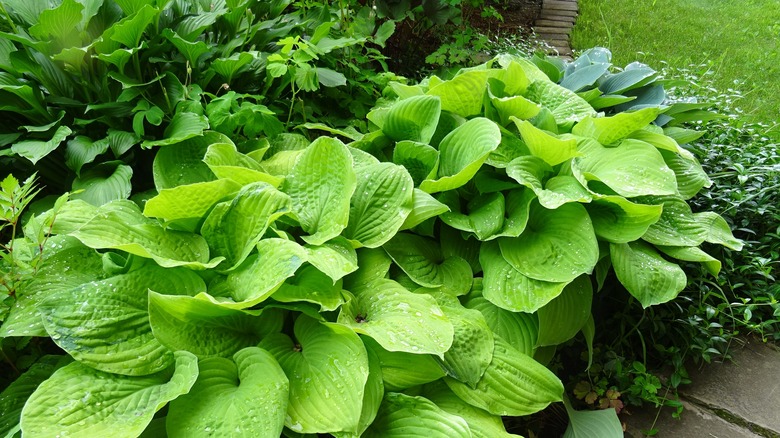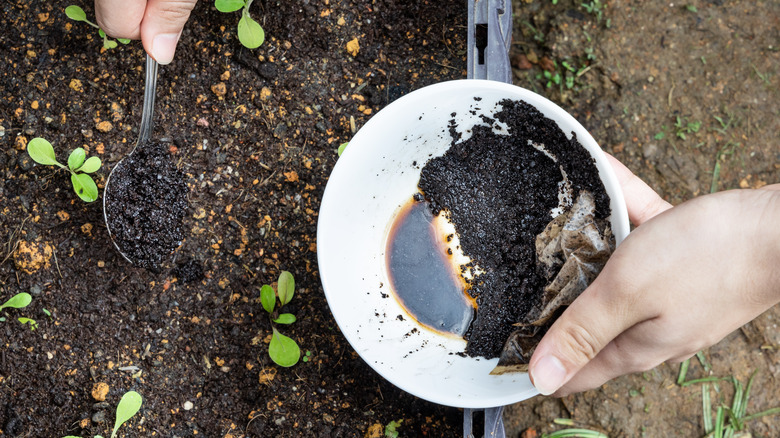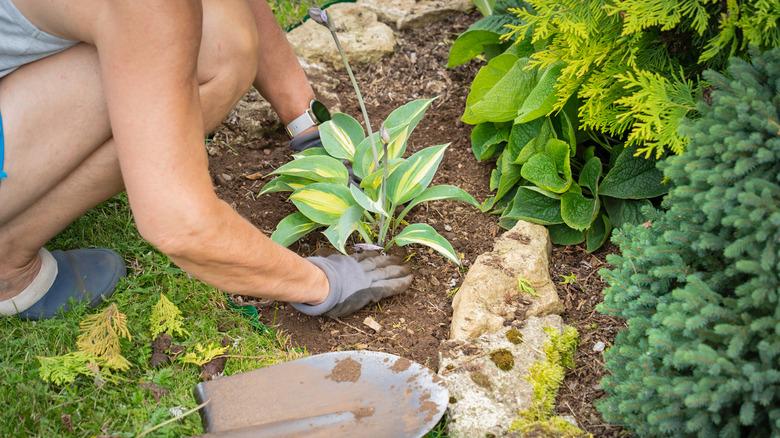Can Coffee Grounds Really Help Hostas Flourish? House Digest's Master Gardener Weighs In
Hostas add color and interest to shady areas, and there are so many gorgeous varieties from which to choose. If you're struggling to fill an area that doesn't have much access to the sun, combining different types of hostas with hardy ferns can turn a dark, bleak space into a dynamic shade garden. Caring for hosta plants doesn't require much effort since they're low maintenance, but planting these around your space will produce the most beautiful leaves if they're kept in moist, fertile soil. Your spent coffee grounds can help provide nutrients and create the soil environment they need. Further, because this trick uses an item that would have gone to waste, it may be worth trying out for yourself.
Although hostas will grow in lean soils, you will get the best results by adding some fertilizer. For instance, when given the right soil conditions, the stunning Empress Wu hosta can grow up to 5 feet tall and 8 feet wide. Although this variety can still grow in most soils, it will not reach its full potential without a little help. This rule also applies to the many other gorgeous broad-leaved and variegated species. The better your soil, the more beautiful your shady spaces will be — and coffee grounds could add some beneficial nutrients.
Why coffee grounds can benefit hostas
While used coffee grounds may be depleted of flavor and caffeine, they're still full of nutrients that can be beneficial to plants. What is considered food waste still contains the macronutrients nitrogen, phosphorus, and potassium. They also contain loads of micronutrients that help feed the soil. Coffee grounds also help improve the soil structure by adding organic material, helping it retain moisture without becoming waterlogged. Not only can they improve your soil and feed your plants, but used grounds are slightly acidic. Hostas grow best in soils with a pH between 6.5 and 7.5, so adding a little acid to the soil can help create the perfect environment for this stunning greenery to thrive. However, you may want to regularly measure the pH level of your soil to ensure it's not too acidic.
Instead of tossing those used coffee grounds in the trash, consider storing them in a freezer container. Unless you make several pots of coffee every day, it may take a little while to collect enough coffee grounds to amend your soil. Once your container is full, let it thaw before using your free fertilizer around your hostas.
How to use coffee grounds around your hostas
There are several ways to use coffee grounds to benefit your hostas. The simplest way to add them to your soil is to simply sprinkle them in a thin layer on the surface of the soil around your plants. Applying a thin layer is crucial, as clumps of grounds could cause poor drainage. With this process, they will slowly break down and work their way into the ground as they decompose. If you're already digging in your ornamental bed or planting new hostas, you can also work coffee grounds into the loose soil.
While the solid grounds act as a slow-release fertilizer that will feed your plants throughout the season, you can also use them to make a foliar spray for a quick burst of nutrients. Create liquid coffee fertilizer by boiling the grounds for about 10 minutes, then let it cool. Filter out the solids and pour the liquid into a spray bottle. Spray the leaves of your plants any time they need a boost while also sprinkling the grounds on the soil. If you make your own compost, you can also simply add your excess coffee grounds to the rest of that organic material. Just toss in your coffee grounds, filter and all, to add even more nutrients to your pile.


